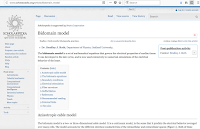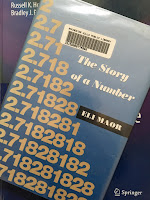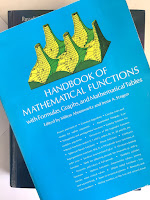 |
| Scholarpedia: The Bidomain Model. |
Scholarpedia is just getting started, so it’s incomplete. But one of the first categories added to Scholarpedia was Cardiac Dynamics. Dr. Vadim Biktashev of the Department of Mathematical Sciences at the University of Liverpool is the editor for this category, and has organized many fascinating articles related to this topic. Anyone studying Chapters 7–10 of the 4th edition of Intermediate Physics for Medicine and Biology will find these Scholarpedia articles on cardiac dynamics to be a convenient online source of additional information. I’m the author of an article on the Bidomain Model that describes the electrical properties of cardiac tissue (introduced on page 191 in our book). Other particularly good articles are Cardiac Arrhythmia by Flavio Fenton, Elizabeth Cherry and Leon Glass; Models of Cardiac Cell by Fenton and Cherry; and FitzHugh-Nagumo Model by Eugene Izhikevich and Richard FitzHugh. Another category of interest to readers of Intermediate Physics for Medicine and Biology is Models of Neurons, with an article about Neuronal Cable Theory and a planned article about the Hodgkin-Huxley Model. Also, there are excellent articles on Magnetic Resonance Imaging, Transcranial Magnetic Stimulation, and many more topics. Take advantage of this excellent source to find more in-depth information on specific topics than Russ Hobbie and I could fit into our book.









